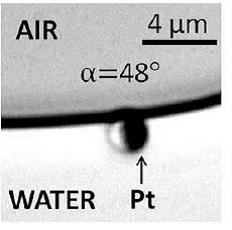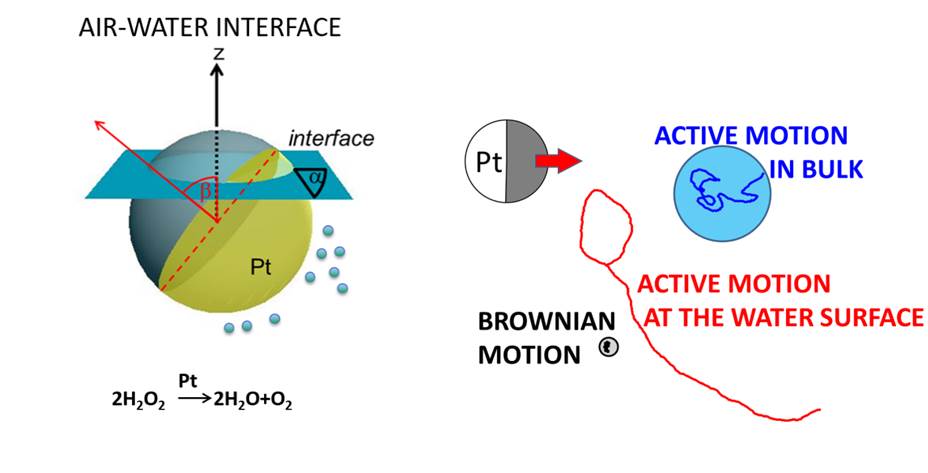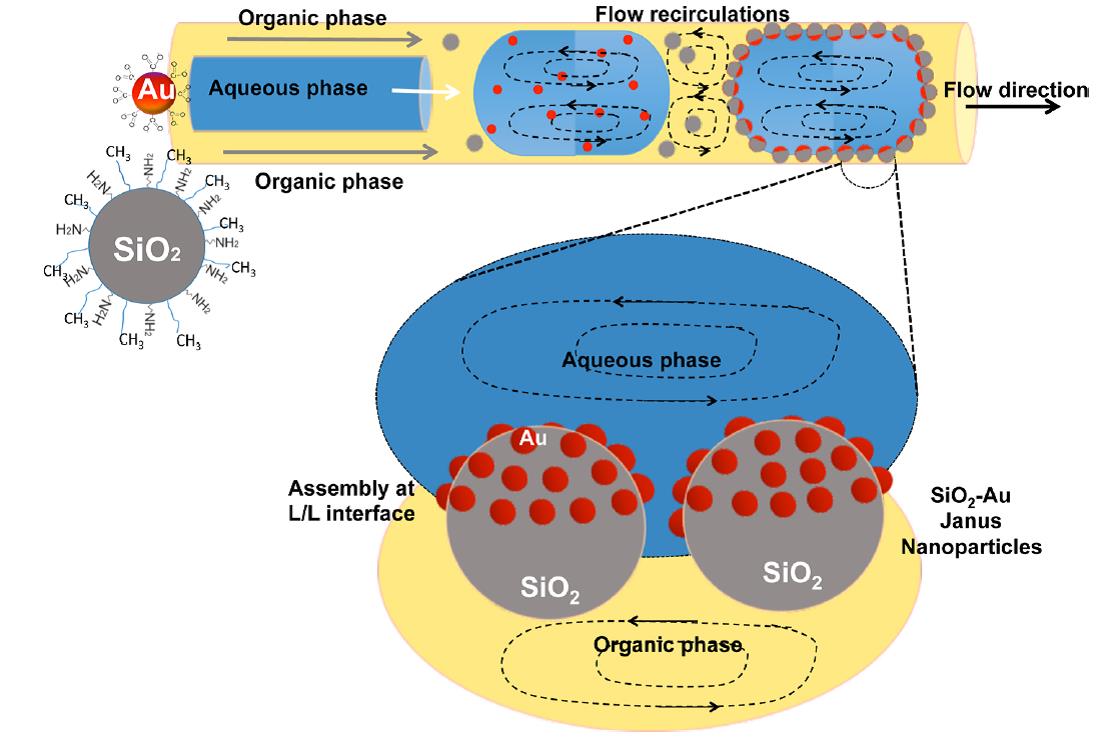Rechercher
Accueil > La Recherche > Axes & Equipes > Matière Molle & Verres > Equipe : Matière Molle > Thème : Interfaces complexes
Active Janus colloids at the interface of simple fluids
publié le , mis à jour le
Active Janus colloids at the interface of simple fluids
People involved : Stocco A., Blanc C., Nobili M., In M., Chollet B.
Colloids partially coated with platinum are able to perform autonomous motion if immersed in hydrogen peroxide solutions. A catalytic reaction occurs on platinum and leads to an asymmetric distribution of molecules and the detachment of oxygen bubbles which in turn self-propel the Janus colloid. A directional motion is observed and the persistent time is set by the Brownian rotational time of the colloid, i.e. the inverse of the rotational diffusion coefficient.
We have experimentally investigated active Janus colloids trapped at the air-water interface ; and we have demonstrated that interfacial friction due to partial wetting dynamics contribute in slowing down the rotational diffusion and enhance the persistence of the active motion, see Fig. 1.
Fig. 1 Sketch of a Janus particle made of platinum and silica and typical trajectories of passive and active motion in bulk and at the water surface.
Some fundamental aspects of the physics of Wetting for Janus colloids at the fluid interface have been also investigated. In particular, we highlighted the importance of contact line pinning on the orientation, contact angle hysteresis and rotational diffusion of Janus colloids, see Fig. 2.

Fig. 2 Optical image of a Janus platinum-silica particle attached at the air-water interface with a contact angle ALPHA.
Finally, we have explored new fabrication routes to obtain Janus particles. We used Pickering emulsions to adsorb bare silica particles at the interface and immobilize them in order to grow chemically a platinum layer on the surface fraction wetted by the aqueous face.
In a different project, in collaboration with Ali Abou Hassan (University Paris 6), we used a droplet based microfluidic approach to fabricate Janus hybrids which can be tested as active colloids, see Fig. 3.
Fig. 3 Sketch of a microfluidic device for Janus hybrid fabrication. Hydrophobic silica particles dispersed in oil and gold nanoparticle dispersed in water meet at the interface where they assemble in Janus hybrids with the gold nanoparticles adsorbing on the silica face wetted by water.
References :
- Enhanced active motion of Janus colloids at the water surface
Wang X., In M., Blanc C., Nobili M., Stocco A.
Soft Matter, vol. 11 p.7376-7384 (2015)
- Wetting and orientation of catalytic Janus colloids at the surface of water
Wang X, In M, Blanc C, Malgaretti P, Nobili M, Stocco A
Faraday Discussions, DOI : 10.1039/C6FD00025H (2016)
- Droplet Liquid/Liquid Interfaces Generated in a Microfluidic Device for Assembling Janus Inorganic Nanohybrids
Hassan N., Stocco A., Abou-Hassan A.
The Journal Of Physical Chemistry C, vol. 119 p.10758–10765 (2015)










